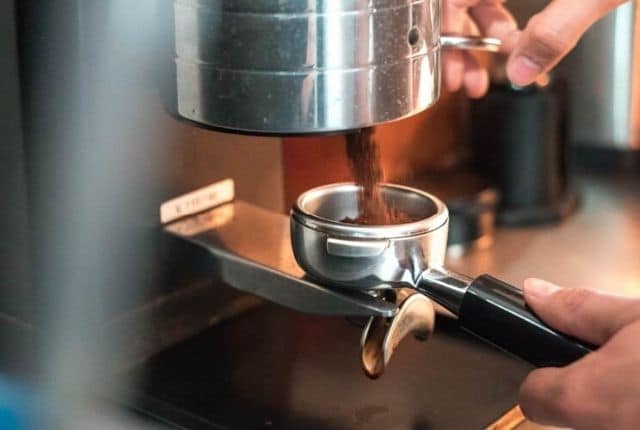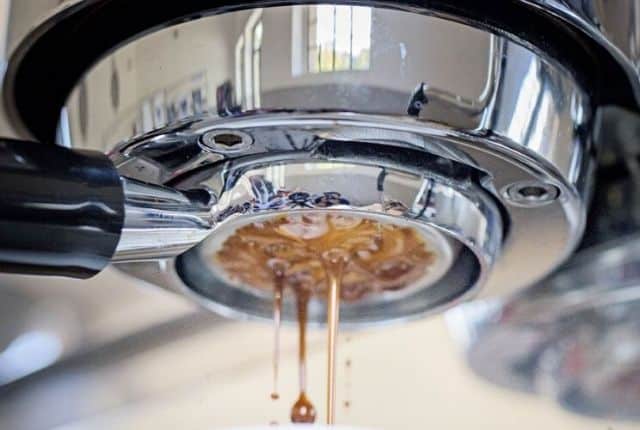
‘Macchiato’ is an Italian word that loosely translates to ‘marked’ – and is commonly used to describe the coffee beverage of the same name. Ask most fans of the drink how to make it, and they’ll say that you add some milk to an espresso shot.
While this is correct, there’s no universally accepted amount of milk used, which means that if you order a macchiato in different cafés, you could get drastically different drinks. Here’s where the macchiato originates from, how it’s served today, and how it might evolve in the future.

WHO INVENTED THE MACCHIATO & HOW IS IT MADE?
The macchiato was likely created in Italy in the eighties by baristas wanting to distinguish an order for a plain espresso from one including some milk. A similar beverage is consumed in Portugal called a café pingado or coffee with a drop of milk. It means that the recipe for a macchiato will depend on the ratio of espresso to milk used – bearing in mind that many consider a cortado to be equal parts milk to espresso and a piccolo latte to be a shot of espresso topped with milk and foam.
Other drinks share the same name as the macchiato, making it challenging to differentiate it. For example in Australia, you can order a long macchiato, which is two espresso shots and a dash of milk. You can also order a caramel macchiato from Starbucks, which is a drink invented in the nineties consisting of steamed milk with a little espresso added to it, topped with caramel syrup or flavouring.
For a more accurate modern definition of the drink, I spoke to four coffee professionals from around the world to get their opinions on the topic.
Everyone’s Ideal Macchiato Is Different
Lauro Fioretti is head of Knowledge and Education at Simonelli Group, a coffee equipment manufacturer. He explains to me that two different drinks exist – the macchiato and the espresso macchiato. The former is usually served in a tall glass and consists of espresso, cold milk, and hot milk layered upon each other. The espresso macchiato is smaller and served in an espresso cup. This cup is almost filled to the brim with a regular dose of espresso, with steamed milk added to bring it to the brim.
In speaking to two other professionals, it became apparent that many make the macchiato with foam instead of milk. Ollie Futcher, Head Roaster at Saint Espresso in London believes macchiato is “a double espresso (unless specified otherwise) with milk foam that’s textured smoothly spooned on top”. Mikael Jasin, Director of the So So Good Coffee Company in Jakarta, Indonesia, agrees that a macchiato is made “using one full shot of espresso and a dollop of milk foam.”
While Lauro believes that the base of an espresso macchiato should contain a shot of espresso and a little milk, he admits that some coffee shops in Italy customise it with latte art or make other swops. “There are people that only add foam on top of the espresso, there are people that add only hot milk and people that add only cold milk.” However, Ollie agrees that the drink is usually customised, as he says he often asks the customer if they want a top-up of hot milk.

WHO DOES THE MACCHIATO APPEAL TO?
Whether it’s made with milk or milk foam, the macchiato is a drink dominated by espresso. The traditional espresso macchiato is popular in many countries as it’s not as strong as an espresso but not as diluted as a latte. Lauro says “it’s a nice compromise between these two beverages. People that like something softer than the espresso… generally, go for an espresso macchiato. It can be a good alternative to the latte or cappuccino in the morning or midday”. 2017 Swiss Barista Champion André Eiermann of Victoria Arduino Australia agrees that the drink suits someone who wants something less intense than an espresso. He says, “It’s a harmonious espresso-based milk beverage for espresso lovers who look for a hint of additional sweetness and creaminess from the milk.” Ollie agrees, stating that it’s “a balance between a customer that doesn’t want the full impact of espresso but likes to maintain the strength of flavours in the cup. The milk foam adds texture to the drink, whilst not diluting the espresso too much.”
In a market where dairy milk is falling out of favour with customers, the espresso macchiato might be seen as a healthier option, as it only contains a small amount of milk or milk foam – something that also won’t dramatically increase the drink’s calorie account. André says that it “attracts calorie-conscious coffee consumers or milk beverage enthusiasts who don’t want to drink a lot of milk.”
Lauro concurs, saying that “we need also to consider the nutritional aspect of the beverage… [the[ espresso macchiato… will add much fewer calories than a latte or a cappuccino.” Mikael adds that this could also decrease the amount of sugar added to the drink, as “the milk foam is there to sweeten the coffee without the use of sugar, so it’s seen as … the healthier option.”

HOW WILL THE MACCHIATO EVOLVE IN THE FUTURE?
The macchiato has obvious appeal for some customers, despite its recipe differing from coffee shop to coffee shop. Ollie believes that it will keep doing this – and that future versions of the drink will have less milk than ever as roasters start roasting beans to create a more balanced espresso that appeals to a wide audience and requires fewer additives like milk and sugar. He explains that “it’s difficult to consistently make a great tasting espresso that would appeal to a wide audience. You have roasters trying to achieve different results, whether that be roasting darker and accommodating the added bitterness with sugar/milk/salt, or you have roasters pushing lighter and lighter with consumers attempting similar remedies to balance the cup. As espresso moves further towards achieving more balance in the cup and more consistency, you may see customers trend towards using less milk.”
Lauro believes that as companies start to roast their coffees in order to highlight its best characteristics, they won’t need to compensate with milk. However, he cautions that this might be challenging for baristas, as the espresso macchiato is “difficult to balance as it requires a balanced espresso cup at the beginning as you can’t cover any defect with the milk.”
André also believes that the success of the drink could be impacted by who is making it, as “the espresso shot has to be consistently perfect. You cannot hide a badly extracted espresso in a macchiato. I personally like this challenge for baristas to showcase their best skills”.

Whether it’s foam-based or contains milk, the macchiato is arguably the coffee-based beverage that contains the least amount of milk. While this might have been part of its appeal in the past, a rise in quality of roast beans might mean that future espressos require no milk at all. However, this will depend on many factors – including the local market demand as well as the skills of the baristas in question.
This is a repost, original article made by : the perfect daily grind
